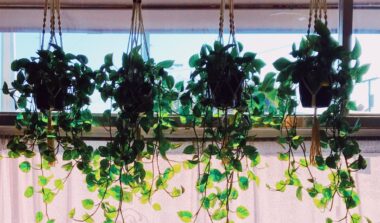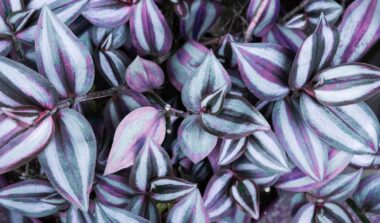As an avid plant enthusiast, I have always been captivated by the breathtaking beauty of tropical plants. Their vibrant colors, lush foliage, and exotic allure never fail to transport me to a world of serenity and tranquility.
In my journey of nurturing and growing tropical plants, I have gained valuable insights and experiences that I am excited to share with you in this guide. Join me as we embark on a captivating adventure, delving into the art of growing and caring for tropical plants.
Let’s dive into the majestic world of tropical plants and unlock the secrets to cultivating their splendor together.
What are Tropical Plants?
Tropical plants are a diverse group of plant species that are native to tropical regions, characterized by their ability to thrive in warm, humid climates. These plants display a wide range of sizes, shapes, and forms, each possessing unique adaptations to survive in their specific tropical ecosystems.

From towering palm trees to delicate orchids, tropical plants encompass a vast array of species that contribute to the breathtaking biodiversity found in tropical regions around the world.
Tropical Planting: Creating Your Tropical Oasis
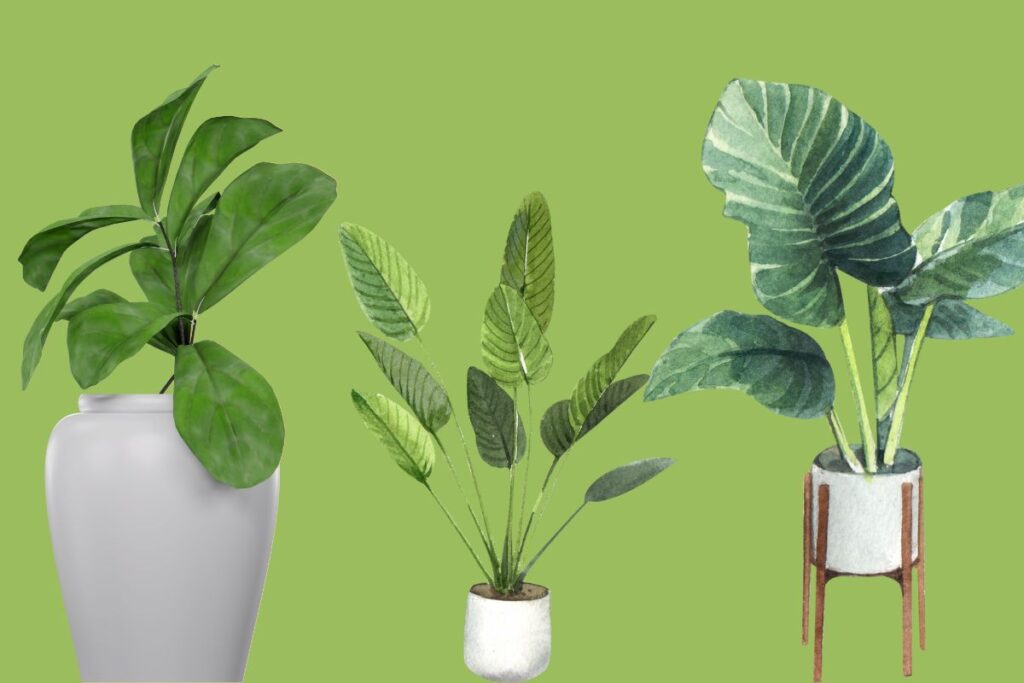
Welcome to the world of tropical planting, where lush greenery and vibrant blooms come together to create your very own tropical oasis.
Get ready to embrace the beauty and tranquility of the tropics as we explore the essentials of tropical planting and discover the secrets to creating a thriving, enchanting oasis right in your own backyard.
Selecting the Perfect Tropical Plant
When it comes to tropical planting, choosing the right plant is crucial. Consider the climate, available space, and desired maintenance level. Some popular tropical plants for beginners include the Bird of Paradise, Bromeliads, and Peace Lily.
Preparing the Soil
Tropical plants thrive in well-draining soil that is rich in organic matter. Before planting, prepare the ground by adding compost or aged manure to enhance its fertility and moisture-retention capabilities.
Providing Adequate Sunlight
Most tropical plants enjoy bright, indirect sunlight. Find a location in your garden or home that offers filtered light or partial shade. Avoid placing them in direct sunlight, as it can scorch their delicate foliage.
Maintaining Proper Watering Techniques
Tropical plants have specific watering requirements. They generally prefer moist soil but should not be overwatered. Check the moisture level by inserting your finger into the soil. If the top inch feels dry, it’s time to water.
Fertilizing for Optimal Growth
To ensure healthy growth and vibrant blooms, fertilize your tropical plants regularly. Choose a balanced, water-soluble fertilizer specifically formulated for tropical plants. Follow the instructions on the package for the correct dosage and application frequency.
Related Reading:
Tropical Flowers: Nature’s Colorful Masterpieces
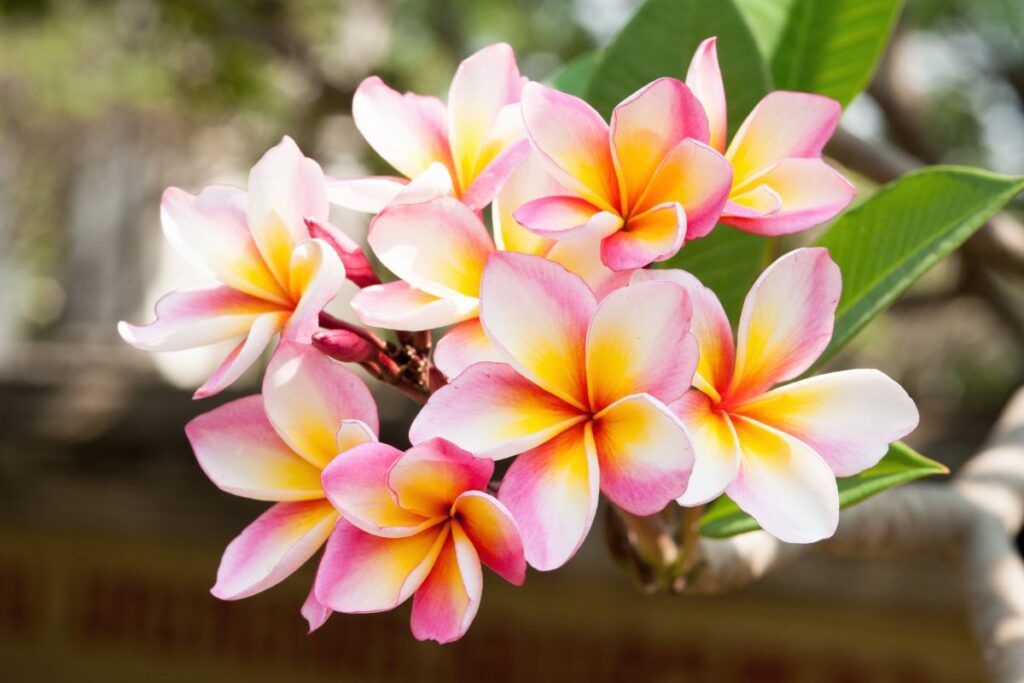
Tropical flowers are renowned for their exotic beauty and captivating fragrance. Here are some stunning tropical flowers to consider for your garden or indoor display:
Orchids: The Epitome of Elegance
Orchids are the epitome of elegance, with their intricate blooms and stunning colors. These tropical flowers come in countless varieties, each more breathtaking than the last. They require specific care, including proper humidity levels and adequate air circulation.
Hibiscus: Vibrant and Bold
Hibiscus flowers are known for their vibrant hues and trumpet-like shapes. These tropical beauties make a bold statement in any garden. With proper care and attention to pruning, they can produce an abundance of blooms throughout the year.
Plumeria: Fragrant Delights
Plumeria flowers captivate with their mesmerizing fragrance and delicate petals. These tropical flowers are often associated with Hawaiian leis and evoke relaxation and bliss. Plumerias thrive in warm climates and require well-draining soil.
Bird of Paradise: Exotic Splendor
The Bird of Paradise flower showcases exotic splendor with its distinctive shape and vivid colors. Native to South Africa, this tropical beauty flourishes in warm climates and requires full sun exposure to bloom magnificently.
Tropical Indoor Plants: Bringing the Tropics Indoors

Get ready to infuse your home with a breath of fresh air, natural beauty, and a touch of exotic allure as we dive into the wonderful world of tropical indoor plants. Let’s turn your living space into a tropical sanctuary where you can unwind, recharge, and escape the everyday hustle and bustle.
Aroids: Verdant Foliage Delights
Aroids, such as the popular Monstera deliciosa, are beloved tropical indoor plants known for their large, vibrant leaves. These plants thrive in well-draining soil and benefit from regular misting to maintain humidity levels.
Snake Plant: Hardiness and Elegance
The Snake Plant, also known as Sansevieria, is a hardy, low-maintenance tropical indoor plant. Its sword-shaped leaves add a touch of elegance to any space, and it thrives in a wide range of lighting conditions.
ZZ Plant: Beauty in Simplicity
The ZZ Plant is a tropical indoor plant that combines beauty with simplicity. Its glossy, dark green leaves make it an ideal choice for adding a touch of the tropics to any room. The ZZ Plant is also known for its resilience and ability to tolerate low light conditions.
Related Reading:
- Is it Dangerous to Eat Raw Carrots?
- Little Finger Eggplant: Growing Tips, Care, and Recipes
- How to Preserve Tomatoes? Top Ways for Tomato Preservation
Tropical Trees: Majestic Canopies and Shade

Step into a world of majestic canopies and soothing shade as we explore the enchanting realm of tropical trees. Here, we’ll take you on a journey through the wonders of these magnificent giants, known for their towering presence and lush foliage.
Palm Trees: Iconic Tropical Symbols
Palm trees are iconic symbols of the tropics, evoking images of sandy beaches and gentle ocean breezes. With their graceful fronds and towering stature, they create a majestic canopy that offers shade and a sense of tranquility.
Banana Trees: Tropical Bounty
Banana trees not only add a tropical ambiance to your outdoor space but also provide a bountiful harvest of delicious fruit. These fast-growing trees require ample sunlight and regular watering to thrive.
Fiddle-Leaf Fig: Striking Foliage
The Fiddle-Leaf Fig is a tropical tree renowned for its striking, violin-shaped leaves. It adds a touch of drama and elegance to any room, making it a popular choice for interior landscaping. This tree thrives in bright, indirect light.
Tropical Foliage Plants: A Tapestry of Textures and Colors
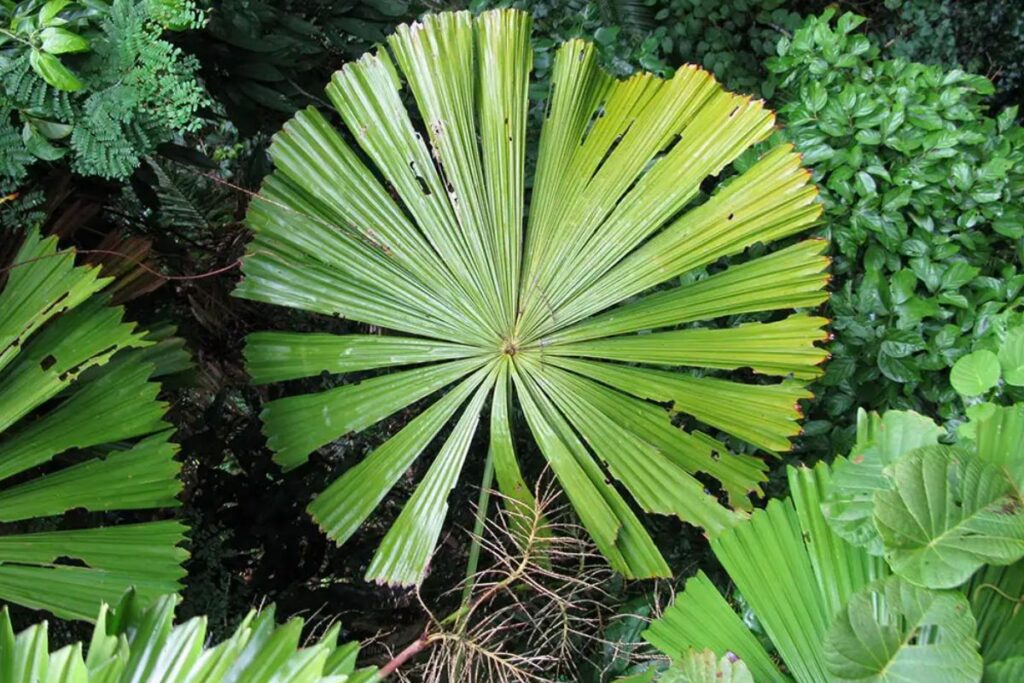
Get ready to transform your surroundings into a living work of art, where every glance reveals a new facet of nature’s splendor.
Calathea: Living Artwork
Calathea plants are often referred to as “living artwork” due to their stunning foliage patterns. These tropical foliage plants thrive in bright, indirect light and high humidity. Their leaves respond to light, opening, and closing with the rhythm of day and night.
Philodendron: Versatile and Varied
Philodendrons are versatile tropical foliage plants available in various sizes and leaf shapes. From the heart-shaped leaves of the Philodendron hederaceum to the large, split leaves of the Philodendron bipinnatifidum, there’s a variety for every plant enthusiast.
Maranta: Nature’s Painterly Strokes
Maranta plants, also known as “prayer plants,” display nature’s painterly strokes on their leaves. These tropical foliage plants thrive in bright, indirect light and require consistently moist soil. Their leaves fold upward at night, resembling hands in prayer.
Outdoor Tropical Plants: Transforming Your Landscape
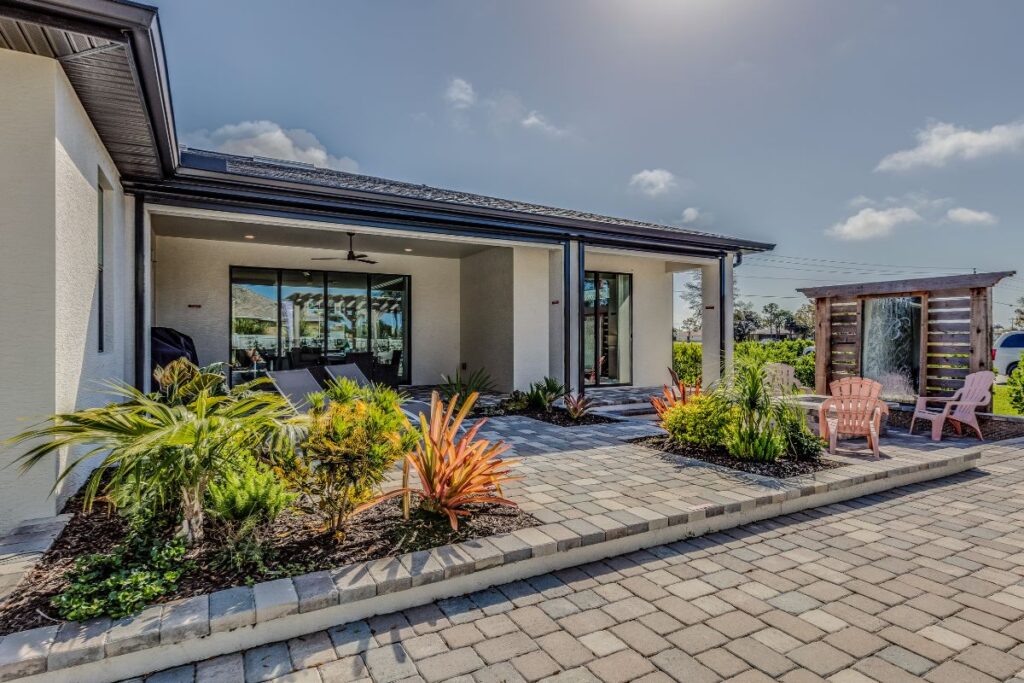
Whether you’re seeking a vibrant burst of color or a tranquil retreat, these outdoor tropical plants will help you achieve the landscape of your dreams.
Cannas: Bold and Beautiful
Cannas are bold and beautiful tropical plants that add a vibrant splash of color to outdoor landscapes. With their large, paddle-shaped leaves and stunning blooms, they create a tropical paradise in gardens and containers alike.
Elephant Ears: Dramatic Foliage
Elephant Ears, or Alocasia plants, feature large, heart-shaped leaves that resemble the ears of an elephant. These tropical plants thrive in moist, well-draining soil and require partial shade to protect their foliage from scorching.
Related Reading:
- Persian Cucumber: Growing, Differences, and Benefits
- Unleashing Joy: Exploring the Delightful World of Jolly Pumpkins
- Is Zucchini a Superfood?
Which tropical plants are pet-friendly and non-toxic?
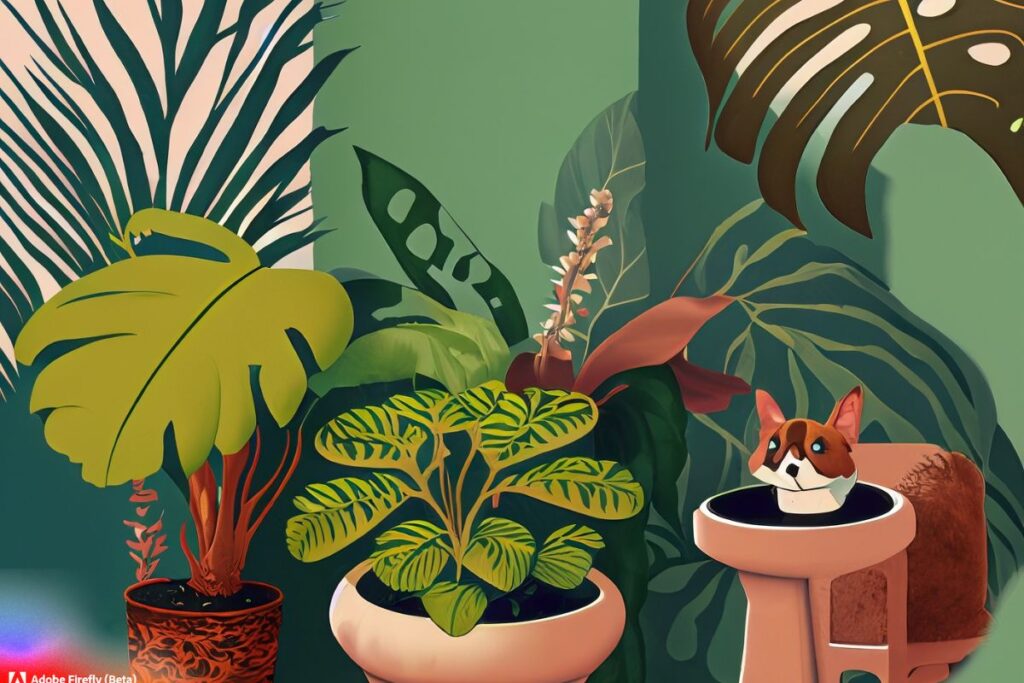
When it comes to selecting tropical plants for your home or garden, it’s essential to consider the safety of your beloved pets. Fortunately, there are numerous pet-friendly and non-toxic tropical plants that you can choose from. Here is a comprehensive list of such plants to help you create a beautiful and pet-safe environment:
Pet-Friendly and Non-Toxic Tropical Plants:
- Areca Palm (Dypsis lutescens): Known for its graceful fronds, this palm is safe for pets and adds a touch of elegance to any space.
- Boston Fern (Nephrolepis exaltata): With its lush foliage and air-purifying qualities, this fern is a popular choice that won’t harm your pets.
- Parlor Palm (Chamaedorea elegans): This compact palm features delicate fronds and is completely safe for both cats and dogs.
- Spider Plant (Chlorophytum comosum): Not only is this plant non-toxic to pets, but its cascading foliage adds a playful touch to any room.
- Areca Butterfly Palm (Dypsis lutescens): Similar to the Areca Palm, this variety is safe for pets and brings a tropical vibe to your living space.
- Money Tree (Pachira aquatica): Often associated with good luck, this plant is safe for pets and features distinctive braided trunks.
- Calathea (Calathea spp.): These stunning foliage plants come in various patterns and colors, and they are safe for pets to be around.
- Friendship Plant (Pilea involucrata): With its attractive textured leaves, this plant is not only safe for pets but also easy to propagate and share with friends.
- Christmas Cactus (Schlumbergera spp.): This festive plant adds color to your space without posing any harm to your furry friends.
- Phalaenopsis Orchid (Phalaenopsis spp.): Known for its exquisite flowers, this orchid is non-toxic to pets and adds a touch of elegance to any setting.
Important Tips For Tropical Plants That Are Pet-friendly and Non-toxic:
- Always research and double-check the toxicity of any specific plant before bringing it into your home.
- Place plants out of your pets’ reach, especially if they have a habit of chewing on leaves or flowers.
- If you suspect your pet has ingested a plant that may be toxic, contact your veterinarian immediately.
- With these pet-friendly and non-toxic tropical plants, you can create a lush and safe environment for both your pets and yourself, allowing you to enjoy the beauty of nature without worry.
How to Water Tropical Plants?
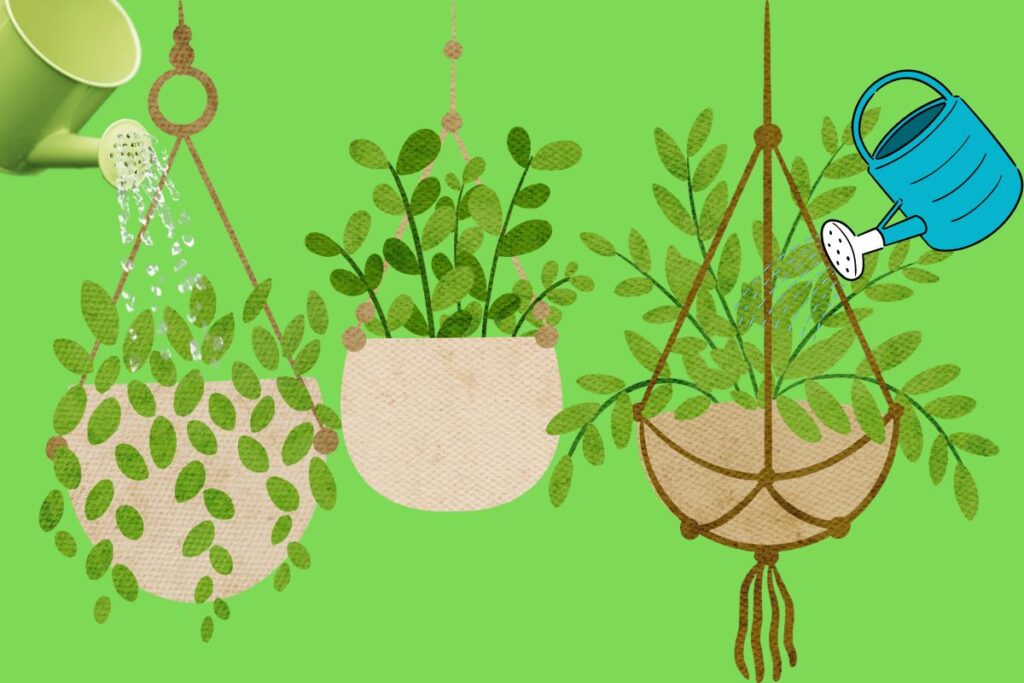
Proper watering is crucial for the health and vitality of tropical plants. Follow these guidelines to ensure your tropical plants receive the right amount of water and thrive in their environment:
- Know your plant’s water requirements: Different tropical plants have varying water needs. Research the specific plant species you have to understand its water preferences, such as whether it prefers consistently moist soil or periodic drying out between waterings.
- Water deeply but infrequently: Instead of frequent light watering, it’s better to water your tropical plants thoroughly but less often. This encourages deep root growth and prevents shallow root development. Aim to saturate the soil until water runs out of the drainage holes, allowing excess water to drain away.
- Observe the soil moisture: Before watering, check the moisture level of the soil by inserting your finger about an inch deep into the soil. If it feels dry at that depth, it’s time to water. If it’s still moist, hold off on watering and check again in a day or two.
- Consider the environmental factors: Factors such as temperature, humidity, and sunlight affect a plant’s water requirements. Higher temperatures and increased sunlight can cause soil to dry out faster, so adjust your watering frequency accordingly. Similarly, if the humidity is high, your plants may need less frequent watering.
- Use the right watering technique: To avoid waterlogging or uneven moisture distribution, water your tropical plants at the base, near the soil. Avoid overhead watering, which can promote fungal diseases and damage delicate foliage.
- Use appropriate watering tools: Utilize a watering can, hose with a gentle spray nozzle, or a drip irrigation system to ensure a controlled and gentle flow of water. This helps prevent soil erosion and minimizes the risk of damaging the plant’s roots.
- Consider the potting medium: Different potting mixes retain moisture differently. Adjust your watering schedule and frequency based on the type of potting medium used. Well-draining soil mixtures are generally recommended for tropical plants to prevent waterlogged roots.
- Watch for signs of overwatering or underwatering: Overwatering can lead to root rot and other plant diseases while underwatering causes wilting and stunted growth. Monitor your plants for signs like yellowing leaves, mushy stems, or a dry and withered appearance, and adjust your watering routine accordingly.
- Consider humidity levels: Tropical plants often appreciate higher humidity levels. To increase humidity, mist your plants occasionally, place them on a tray filled with water and pebbles, or use a humidifier in the room.
- Take seasonal variations into account: As the seasons change, adjust your watering routine to accommodate the shifting needs of your tropical plants. They may require more water during the warmer months and less during the cooler months when growth slows down.
Remember, watering requirements may vary between different tropical plant species, so it’s crucial to research and understands the specific needs of each plant in your care. By providing adequate and appropriate water, you’ll help your tropical plants flourish and thrive in their lush and vibrant glory.
Conclusion
Embarking on the journey of growing and caring for tropical plants opens up a world of lushness and beauty. Whether you choose to cultivate tropical flowers, indoor tropical plants, or create a tropical oasis outdoors, the majesty of these plants will surely captivate you.
With proper planting, watering, and maintenance techniques, you can enjoy the vibrant colors and exquisite foliage that tropical plants have to offer.
So, get ready to bring a touch of the tropics into your life and savor the enchantment of these botanical treasures.
Frequently Asked Questions (FAQs)
What are the best tropical plants for beginners?
Some of the best tropical plants for beginners include the Bird of Paradise, Bromeliads, Peace Lily, and Snake Plant. These plants are relatively low-maintenance and can tolerate a range of growing conditions.
How often should I water my tropical plants?
Tropical plants prefer moist soil but should not be overwatered. Check the moisture level by inserting your finger into the soil. If the top inch feels dry, it’s time to water.
Can I grow tropical plants indoors?
Yes, many tropical plants can thrive indoors. Consider plants like Monstera deliciosa, ZZ Plant, and Aroids for indoor tropical greenery. Provide them with proper lighting conditions and occasional misting to maintain humidity.
How do I fertilize my tropical plants?
Use a balanced, water-soluble fertilizer specifically formulated for tropical plants. Follow the instructions on the package for the correct dosage and application frequency. Be cautious not to over-fertilize, as it can damage the plants.
Which tropical flowers are suitable for cut arrangements?
Orchids, Hibiscus, and Plumerias are popular tropical flowers for cut arrangements. Their vibrant colors and captivating fragrance make them excellent choices for adding a tropical touch to floral displays.
How can I protect my outdoor tropical plants during the colder months?
Outdoor tropical plants are susceptible to cold temperatures. Before the colder months arrive, consider moving them indoors or providing protective coverings. Mulching the soil can also help insulate the roots.




